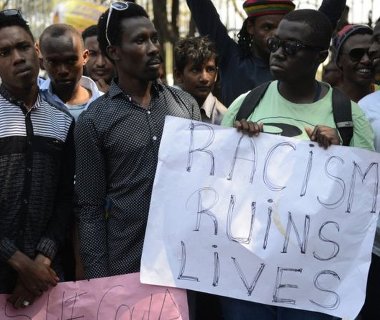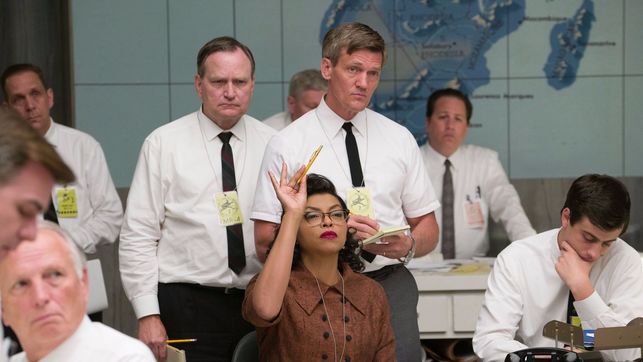África/Abril de 2017/Fuente: University World News
Resumen: Después de lo que se considera ampliamente como ataques racistas contra estudiantes nigerianos en la India en marzo, existe la preocupación de que la violencia podría contribuir a hacer del país un destino menos atractivo para los estudiantes africanos que buscan una educación superior fuera del continente. Según la Asociación de Estudiantes Africanos de la India, cerca de 25.000 africanos estudian en universidades indias, dibujadas por lo que el político indio Shashi Thoor cree que son altos estándares, tarifas bajas y el uso del inglés. Nigeria envía los números más altos, seguido por Sudán y Kenia. Al menos cinco estudiantes nigerianos fueron atacados a finales de marzo en Greater Noida, una ciudad satélite de la capital Delhi. Se retiró un informe posterior de asalto contra un nacional de Kenia. Mientras que los ataques del mes pasado parecen los peores incidentes hasta ahora violentos dirigidos a los africanos han estado creciendo desde 2009, muchos de ellos aislados y en menor escala.
Following what are widely regarded as racist attacks on Nigerian students in India in March, there are concerns that the violence could contribute to making the country a less attractive destination for African students seeking higher education outside the continent.
According to the Association of African Students in India, about 25,000 Africans study in Indian universities, drawn by what Indian politician Shashi Thoor believes are high standards, low fees and the use of English. Nigeria sends the highest numbers, followed by Sudan and Kenya.
At least five Nigerian students were attacked in late March in Greater Noida, a satellite town of the capital Delhi. A subsequent report of assault on a Kenyan national was withdrawn.
While last month’s attacks seem the worst so far violent incidents targeted at Africans have been growing since 2009, many of them isolated and on a smaller scale.
The rise of China
While such attacks are not confined to India – and have in the past been reported in Russian cities, for example – the rise of China and its strong desire to assert its influence on Africa could complicate matters for India, a traditional ally of Africa – at least in terms of education and trade.
Furthermore, observers argue that countries in Eastern Europe, including Ukraine and Russia itself, are increasingly emerging as study destinations for Africans, thanks to relative affordability, as well as scholarships offered by respective governments.
Last month, the government of the Slovak Republic offered Kenya six scholarships for various programmes in the Eastern Europe country, while the Russian government, though its state nuclear energy corporation Rosatom, offered 60 places to students from all over Africa to study nuclear and related sciences.
Back in Africa, the impact of the attacks is the subject of debate.
“The recent attacks gave India widespread negative publicity but they were confined to just one part of the country in a very vast country,” said Patrick Mbataru, a lecturer at Kenyatta University’s School of Agribusiness in Nairobi.
Historical ties
The attacks in his opinion should not justify labelling India a racist country or even make the country unattractive to Africans, considering that Africans have been seeking higher education there for decades.
“We have seen racism and even attacks in Eastern Europe and Russia, so it would not be fair to say racism against Africans is only found in India. However, it is important to note that China also has its eyes on Africa and would like to edge out India as a destination of choice,” he said.
Inroads made by China in Africa, including the introduction of Chinese language teaching and the establishment of Confucius institutes, in addition to widespread economic ties, are pointers that the Asian giant is set to compete with India in the higher education sector, he said.
Mbataru said while India had edge due to traditional ties and the fact that English as medium of instruction in universities favoured the country, the problem of language could be solved through a one-year “crash course” in the Chinese language.
In an article published by the Hong Kong-based South China Morning Post, Ajay Dubey, a professor at the Centre for African Studies in India’s premier Jawaharlal Nehru University, was quoted as saying: “These attacks will affect bilateral ties adversely. It will damage recent Indian initiatives to promote people-to-people contact under India-Africa forum summit initiatives.”
India’s advantages
However, Shashi Thoor, former United Nations Under-Secretary and Chairman of the Standing Committee on External Affairs in India’s lower house of parliament Lok Sabha, said his country will continue drawing African students and believes India still has many advantages over China.
“I can understand why many African students would consider other options. Language, however, remains a powerful disincentive when it comes to studying in China”, he told University World News.
He said India has been “warmly” receiving Africans for decades and the fact that the violence was localised meant it was not enough to tarnish the country’s image.
“The problems we are all reading about relate essentially to the Delhi area. African students have received a warm and hospitable welcome in many other parts of India, particularly Southern India,” said the parliamentarian.
“There is a case for diversifying away from the crowded and stressed life of the national capital”, he said in reference to the densely populated nature of the city and attendant challenges.
Solidarity
A strong sense of sympathy and solidarity with Africans and African causes remained strong among most educated Indians, said Thoor, and this had endeared Africans to the country.
Thoor urged students not to be discouraged from seeking education in India, noting that Africans had been coming to India for higher learning for 60 years.
“Every society, sadly, has its share of thugs and racists we should not assume everyone in India is like the goons who misbehaved with Africans recently,” Thoor said.
In his view, factors likely to discourage Africans from seeking to study in India include growing opportunities in Africa and the fact that education in India was becoming more expensive, or a drop in the overall number of available scholarships.
At the 2015 Indo-African summit attended by representatives of 54 African countries, India committed to offer 50,000 scholarships to Africans over a period of five years beginning in 2016, as well as pledging US$10 billion in “concessional credits” over the same period, and a US$600 million grant.
Fuente: http://www.universityworldnews.com/article.php?story=2017042107142845











 Users Today : 125
Users Today : 125 Total Users : 35459720
Total Users : 35459720 Views Today : 212
Views Today : 212 Total views : 3418184
Total views : 3418184